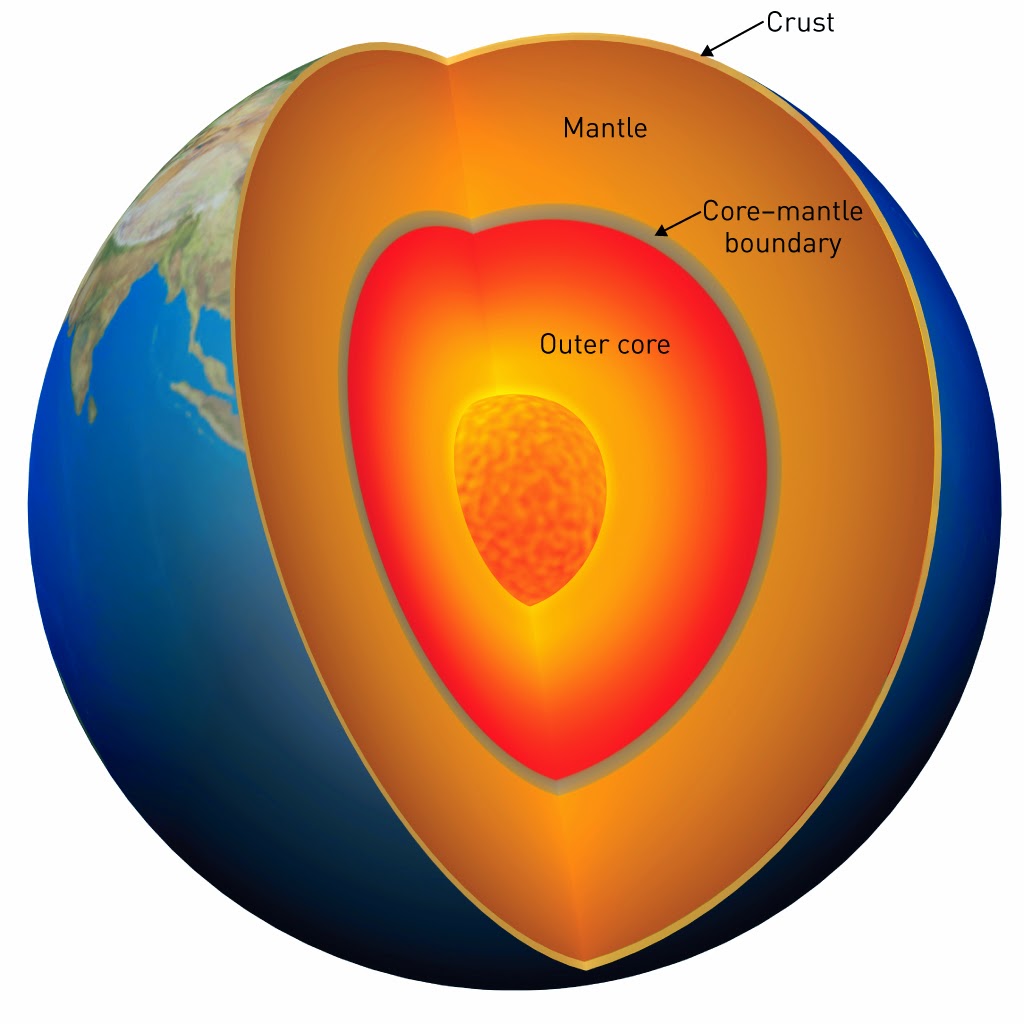
Seismic studies enable geoscientists to map the Earth’s internal structure. Certain seismic observations, however, remain puzzling, such as the unexpected spatial variability in the speed of seismic waves in a thin zone called the D′′ layer at the boundary between the core and mantle (Fig. 1).
Alfred Baron who leads the Materials Dynamics Laboratory at the RIKEN SPring-8 Center, along with Akira Yoneda of Okayama University and colleagues, have now found that these observations can be explained by the structure and orientation of microcrystals that comprise the D′′ layer.
The D′′ layer is composed mainly of magnesium silicate (MgSiO3) microcrystals with a post-perovskite (pPv) structure. Seismological studies have shown that in the D′′ layer beneath the rim of the Pacific Ocean, horizontal shear waves travel faster than vertical shear waves. Beneath the central Pacific Ocean, however, the relative speeds differ, and underneath the Atlantic Ocean they become equal.
The speed of shear waves through a crystal is related to the crystal’s elasticity. The researchers therefore measured the elasticity of microcrystals with the pPv structure. As pPv-MgSiO3 is unstable at ambient pressure, a more stable mineral with the same crystal structure, pPv-calcium iridate (CaIrO3), was studied. “Even that easier experiment is challenging,” says Baron, “as the very small crystals of CaIrO3 are not amenable to most methods of sound velocity measurement.” Fortunately, such measurements are possible using the inelastic x-ray scattering (IXS) spectrometer built by Baron and his colleagues at the SPring-8 synchrotron radiation facility.
Applying an analysis technique developed by co-author Hiroshi Fukui, the researchers were able to measure the different speeds that shear waves travel through pPv-CaIrO3. The results indicate that the elasticity of the pPv structure is strongly directional, suggesting that the different shear wave velocities observed for the D′′ layer are due to regional differences in the predominant orientation of the microcrystals in the layer.
To explain the observed variation, the researchers suggest that when a slab of material moves downward beneath the Pacific rim, it transforms into pPv-MgSiO3 with a crystallographic orientation that allows horizontal shear waves to travel faster than vertical shear waves. As the slab moves under the central Pacific Ocean, it deforms, leading to a change in crystal orientation and a change in the relative seismic velocities.
Baron’s laboratory is now using the IXS technique to determine the speed of sound waves in polycrystalline materials and liquid iron alloys under extreme conditions similar to those of the Earth’s core.
More information:
Yoneda, A., Fukui, H., Xu, F., Nakatsuka, A., Yoshiasa, A., Seto, Y., Ono, K., Tsutsui, S., Uchiyama, H. & Baron, A. Q. R. “Elastic anisotropy of experimental analogues of perovskite and post-perovskite help to interpret D” diversity.” Nature Communications 5, 3453 (2014). DOI: 10.1038/ncomms4453
Note : The above story is based on materials provided by RIKEN









